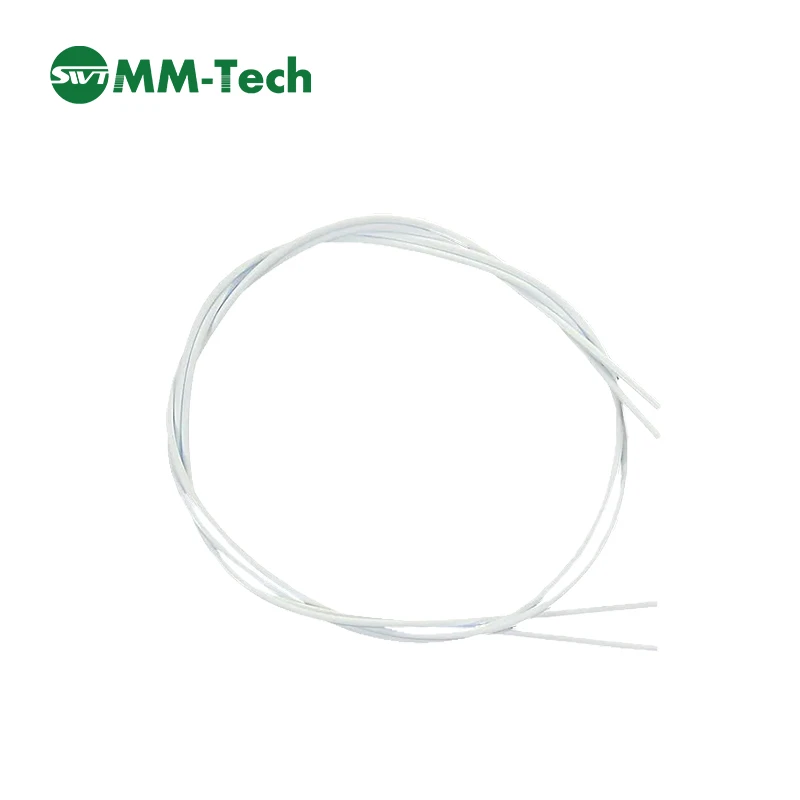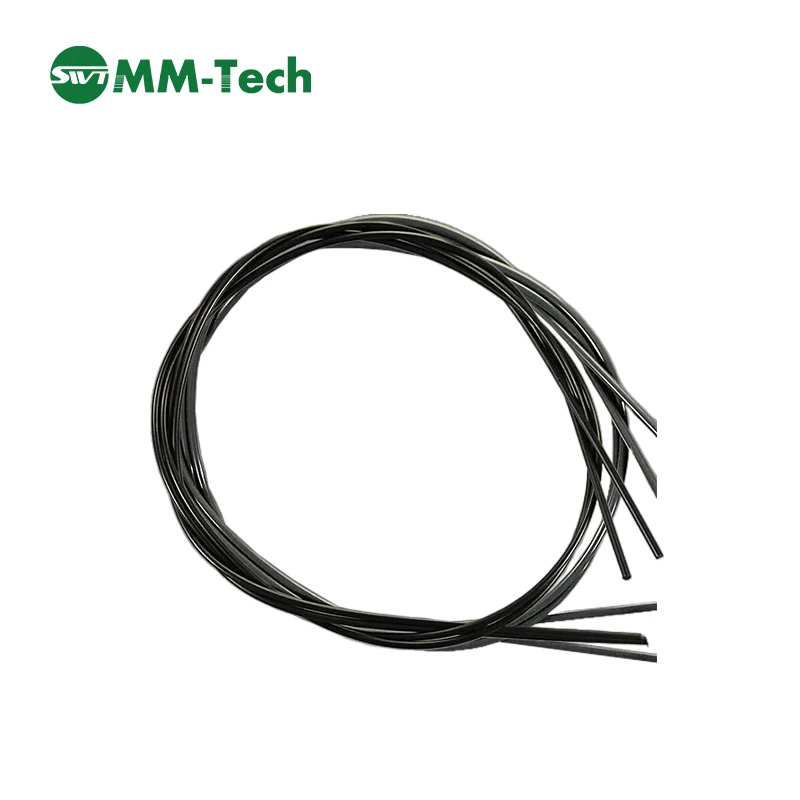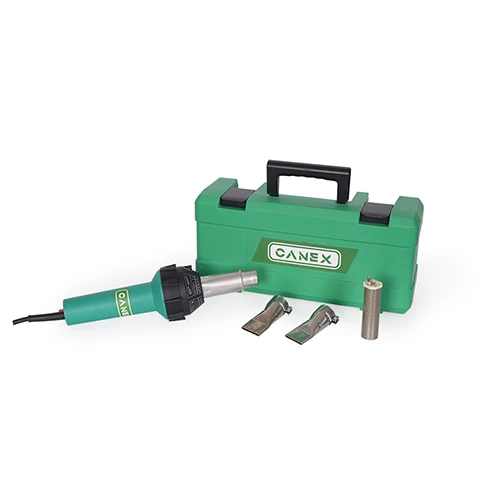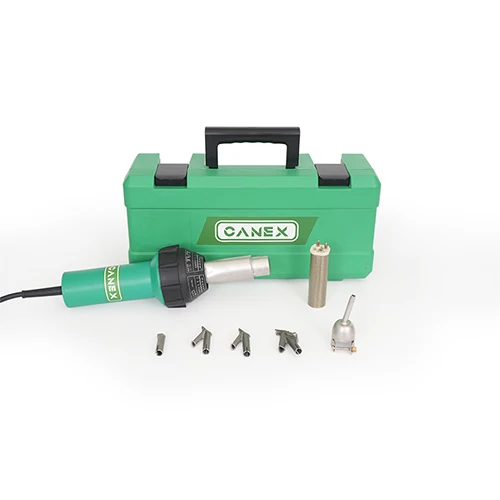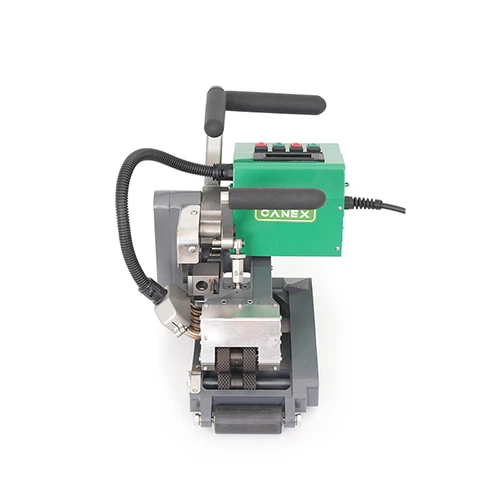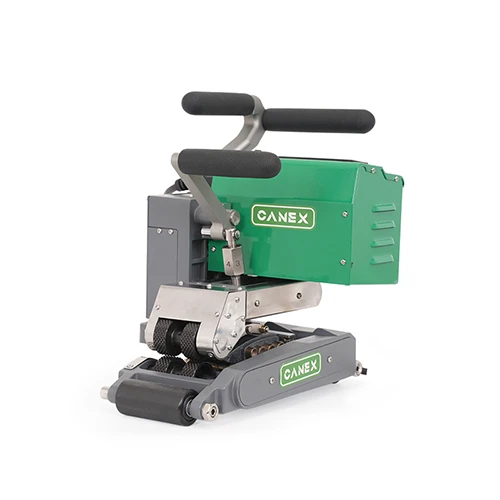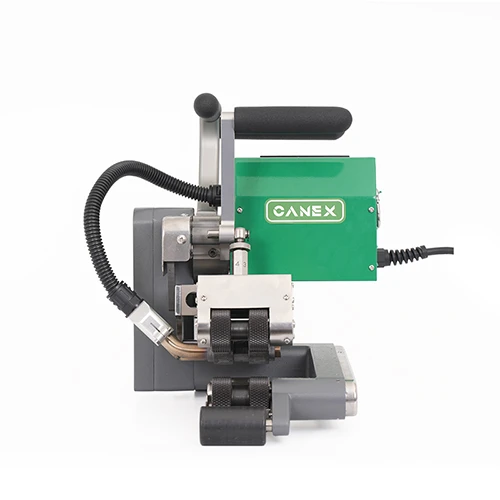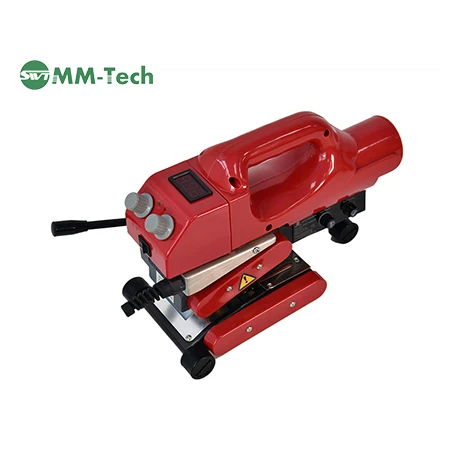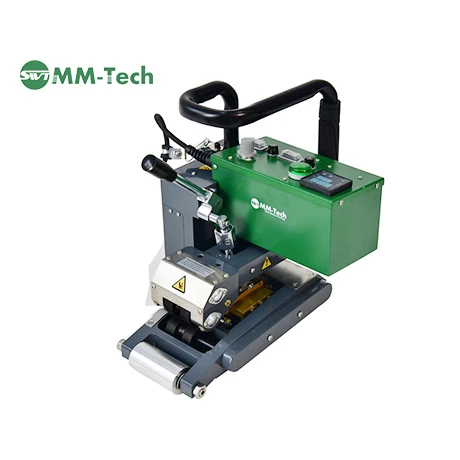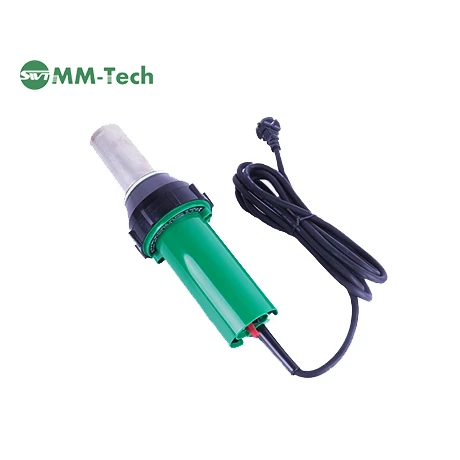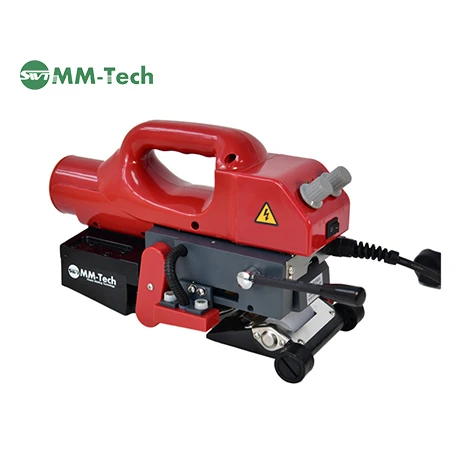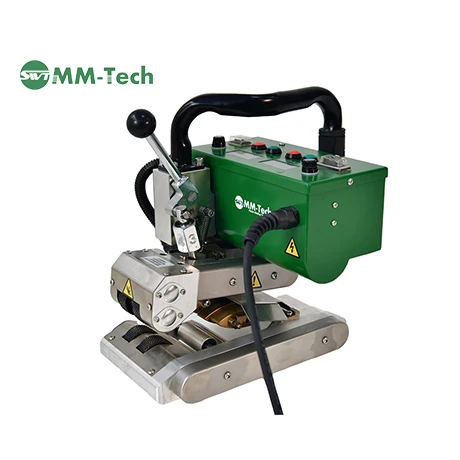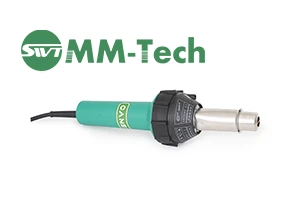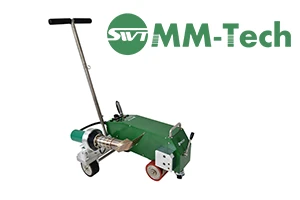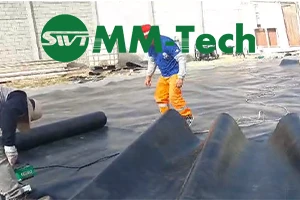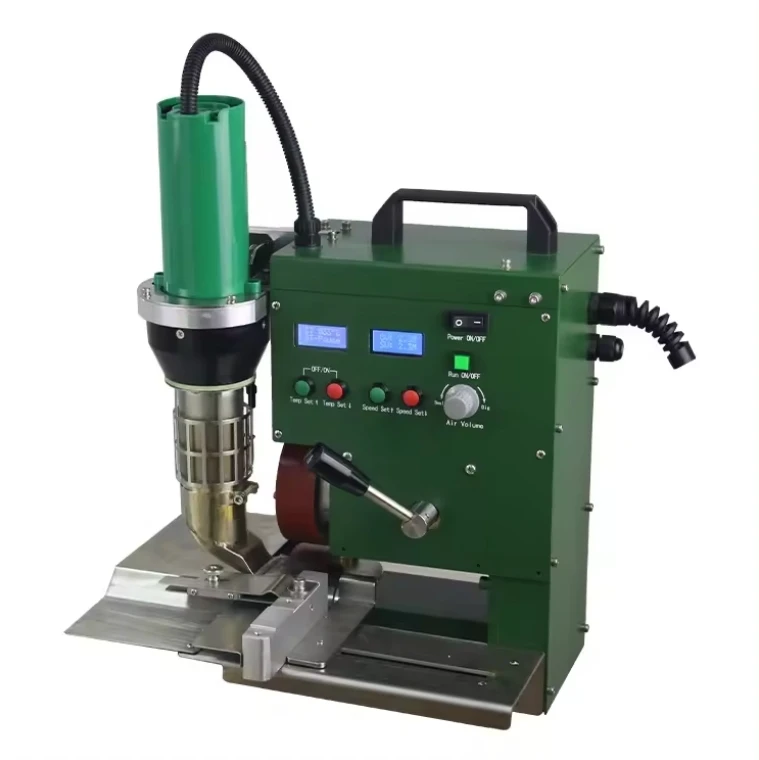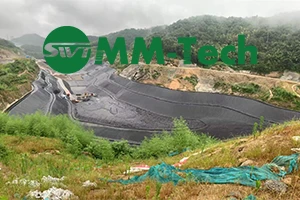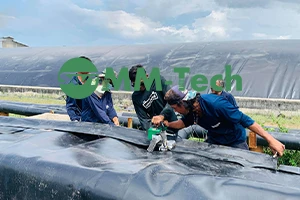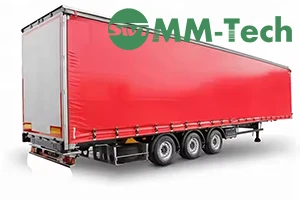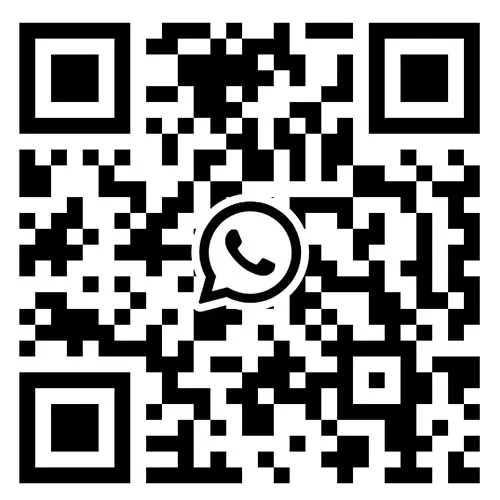In the rapidly expanding world of civil engineering, environmental protection, and infrastructure development, geosynthetic materials have become indispensable. From preventing seepage in landfills to protecting water resources in reservoirs, these high-performance fabrics and membranes provide critical barriers and structural reinforcement. The efficient and precise installation of these materials is paramount to project success and longevity. This is where the advanced **Membrane puller** emerges as a game-changer, revolutionizing the handling and deployment of large-scale geomembranes. This comprehensive guide delves into the specifics of the **Membrane puller**, exploring its technological prowess, real-world applications, manufacturing excellence, and its definitive role in modern geosynthetic projects.
Industry Trends Driving the Demand for Advanced Geosynthetic Installation Equipment
The global geosynthetics market is experiencing robust growth, propelled by increasing investments in infrastructure projects, stringent environmental regulations, and a growing emphasis on sustainable solutions. According-to a market analysis by Grand View Research, the global geosynthetics market size was valued at USD 14.5 billion in 2022 and is projected to grow at a compound annual growth rate (CAGR) of 6.9% from 2023 to 2030. Key trends include:
- Sustainable Infrastructure Development: Governments worldwide are committing to eco-friendly infrastructure, driving demand for geosynthetic solutions in erosion control, waste containment, and water management.
- Mining and Energy Sector Expansion: Growth in mining, oil, and gas industries necessitates efficient and robust containment liners, escalating the need for precise installation tools.
- Urbanization and Waste Management: Rapid urbanization leads to increased waste generation, fueling demand for modern landfill construction and remediation, directly impacting the market for **Membrane puller** technology.
- Technological Advancements: Innovation in material science and installation equipment, such as automated pulling systems, enhances project efficiency and safety.
These macro trends underline the critical need for advanced, reliable, and efficient equipment like the **Membrane puller** to meet the escalating demands of complex geosynthetic installations, ensuring projects are completed on time, within budget, and to the highest quality standards.
Understanding the Membrane Puller: Functionality and Core Purpose
The **Membrane puller**, often referred to as a geomembrane tensioning system or liner deployer, is a specialized piece of heavy-duty equipment designed to facilitate the rapid and controlled deployment of large, heavy rolls of geomembranes across vast, uneven terrains typical of construction sites. Its primary function is to provide the necessary tensile force to unroll, tension, and accurately position geomembrane liners, preparing them for the subsequent welding or seaming processes. This significantly reduces manual labor, enhances safety, and improves the overall efficiency and quality of the liner installation. It is an essential tool for projects requiring precision deployment over challenging landscapes, ensuring the integrity and longevity of the geosynthetic barrier.
Key Technical Parameters of an Advanced Membrane Puller
A high-performance **Membrane puller** is engineered with specific technical parameters to handle the rigorous demands of large-scale geomembrane deployment. These parameters directly influence its efficiency, versatility, and operational safety. Below is a detailed table outlining typical specifications for a robust industrial-grade unit:
| Parameter | Description | Typical Value/Range |
|---|---|---|
| Pulling Force Capacity | Maximum tensile force the machine can exert to pull/tension the membrane. Critical for handling heavy rolls and steep slopes. | Up to 10,000 N (approx. 2,250 lbs) |
| Membrane Roll Weight Capacity | Maximum weight of geomembrane roll that can be loaded and managed by the system. | Up to 2,500 kg (approx. 5,500 lbs) |
| Membrane Roll Width | Accommodates standard geomembrane roll widths. | Up to 8 meters (approx. 26 ft) |
| Pulling Speed | Variable speed control for precise deployment, ranging from slow positioning to faster unrolling. | 0.5 – 5 meters/minute (1.6 - 16.4 ft/min) |
| Power Source | Type of engine/motor driving the hydraulics or electric systems. | Diesel Hydraulic / Electric (3-Phase) |
| Engine Power (Diesel) | For diesel models, indicating the power output. | Approx. 15-25 kW (20-35 HP) |
| Control System | Method of operation, including remote control capabilities. | Wireless Remote Control (up to 100m range) / Manual Control Panel |
| Track System / Mobility | Type of locomotion for navigating terrain. | Heavy-duty track system / Wheel-based (site-dependent) |
| Operating Weight | Total weight of the machine, influencing transport and stability. | Approx. 1,500 – 3,000 kg (3,300 – 6,600 lbs) |
| Dimensions (L x W x H) | Overall footprint of the machine. | Varies, e.g., 3m x 2m x 2m |
| Safety Features | Integrated safety mechanisms. | Emergency Stop, Overload Protection, Anti-tipping Mechanism |
| Materials of Construction | Primary materials ensuring durability and longevity. | High-strength steel alloys, wear-resistant components |
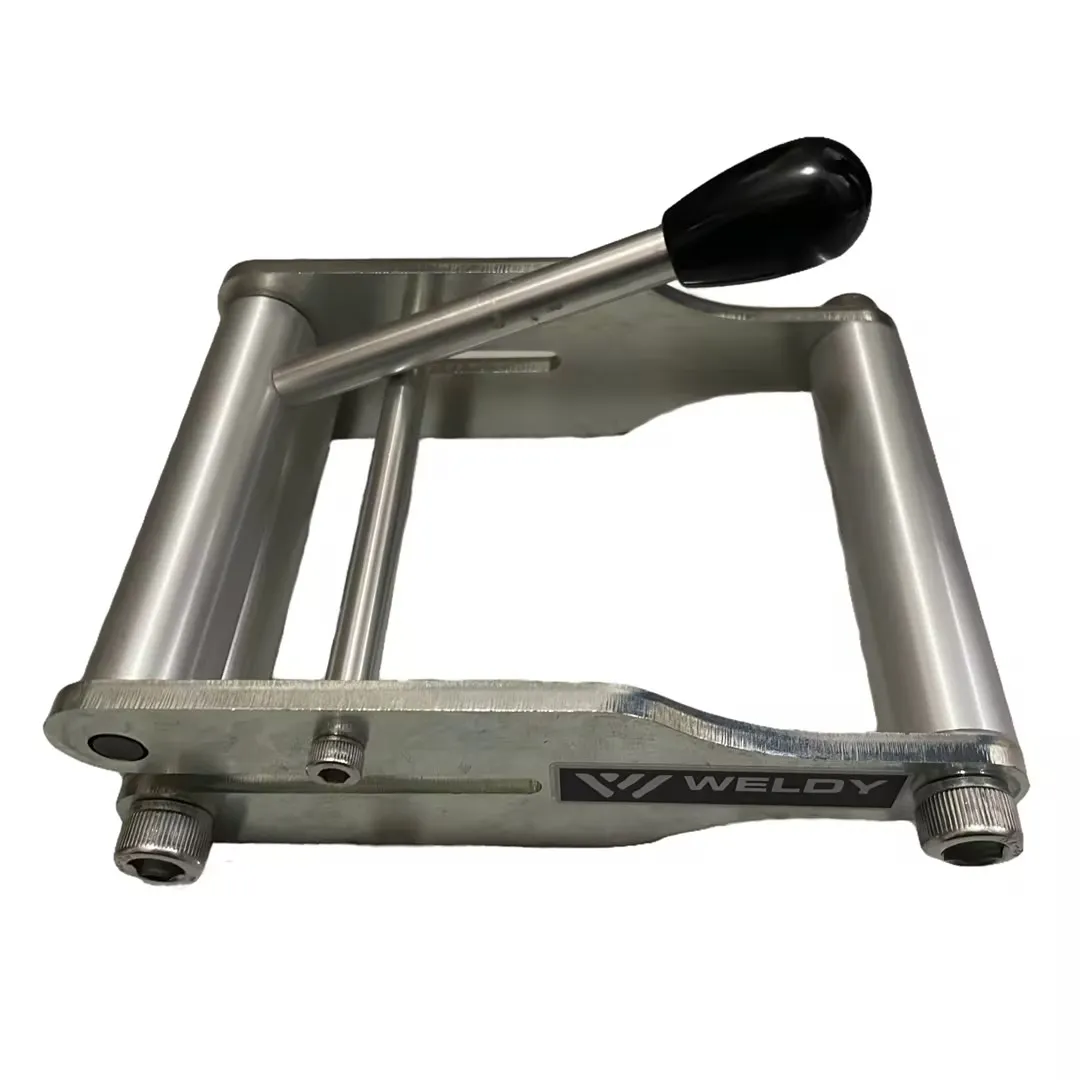
The Meticulous Manufacturing Process of a High-Performance Membrane Puller
The production of a robust and reliable **Membrane puller** is a testament to precision engineering, robust material selection, and stringent quality control. Each unit undergoes a multi-stage manufacturing process to ensure its capability to withstand harsh industrial environments and provide consistent performance.
Detailed Manufacturing Flow:
- Raw Material Selection & Preparation: The journey begins with the selection of premium-grade materials. For structural components, this typically involves high-strength carbon steel and alloy steels, chosen for their superior tensile strength, impact resistance, and durability. Critical components like gears, shafts, and hydraulic parts are often made from hardened steel or specialized alloys to resist wear and fatigue. Materials are rigorously inspected upon arrival for composition and structural integrity, ensuring compliance with international standards such as ASTM and EN.
- Precision Machining (CNC): Core components, including the frame, hydraulic manifold blocks, and intricate mechanical parts, are subjected to advanced Computer Numerical Control (CNC) machining. This ensures unparalleled precision, often down to micrometers, which is crucial for the smooth operation of moving parts and precise alignment. CNC machining ensures tight tolerances and repeatability, which is vital for component interchangeability and overall machine performance.
- Fabrication & Welding: The main chassis and structural elements are fabricated through a combination of cutting, bending, and specialized welding techniques. Robotic welding is often employed for critical joints to ensure consistent weld quality, penetration, and strength, adhering to standards like AWS D1.1 (Structural Welding Code – Steel). Manual welding is used for complex geometries and finishing, performed by certified welders. All welds undergo non-destructive testing (NDT), such as ultrasonic or magnetic particle inspection, to detect any internal flaws.
- Surface Treatment & Corrosion Protection: Given the typical outdoor and often corrosive environments where **Membrane puller** machines operate (e.g., near chemicals, in humid conditions), robust surface protection is critical. Components undergo thorough cleaning, sandblasting, and then are coated with multi-layer industrial-grade anti-corrosion paints or powder coatings. This typically involves a primer rich in zinc for galvanic protection, an intermediate epoxy layer for barrier protection, and a topcoat for UV resistance and aesthetic finish, significantly extending the machine's lifespan and maintaining its appearance.
- Assembly: The multitude of manufactured and procured components (engines, hydraulic pumps, motors, control systems, tracks) are meticulously assembled. This stage involves precise alignment, connection of hydraulic and electrical systems, and installation of safety features. Assembly is performed by skilled technicians following detailed assembly drawings and checklists.
-
Quality Control & Testing: This is a crucial phase where every **Membrane puller** undergoes rigorous functional and performance testing.
- Functional Tests: Verification of all movements, hydraulic system pressure, electrical system integrity, and remote control responsiveness.
- Load Tests: The machine is tested under maximum specified load conditions to ensure its pulling force capacity and structural integrity. This often involves pulling a simulated load that exceeds typical operating weight.
- Durability Tests: Components are put through cycles to simulate prolonged use, assessing wear and tear.
- Safety System Checks: All emergency stops, overload protections, and interlocks are verified for immediate and proper response.
- Adherence to Standards: Testing ensures compliance with international quality management standards like ISO 9001 and relevant safety standards (e.g., ANSI B11.0 Safety of Machinery).
- Final Inspection & Certification: Before dispatch, each **Membrane puller** undergoes a final comprehensive inspection to confirm cosmetic finish, completeness, and adherence to all specifications. Documentation, including operation manuals, maintenance guides, and test certificates, is prepared. Manufacturers like MM TechWeld, certified under ISO 9001, guarantee that their products meet the highest benchmarks for quality and reliability, ensuring a projected usage lifespan of 15-20 years with proper maintenance, even in demanding sectors like petrochemical, metallurgy, and water treatment.
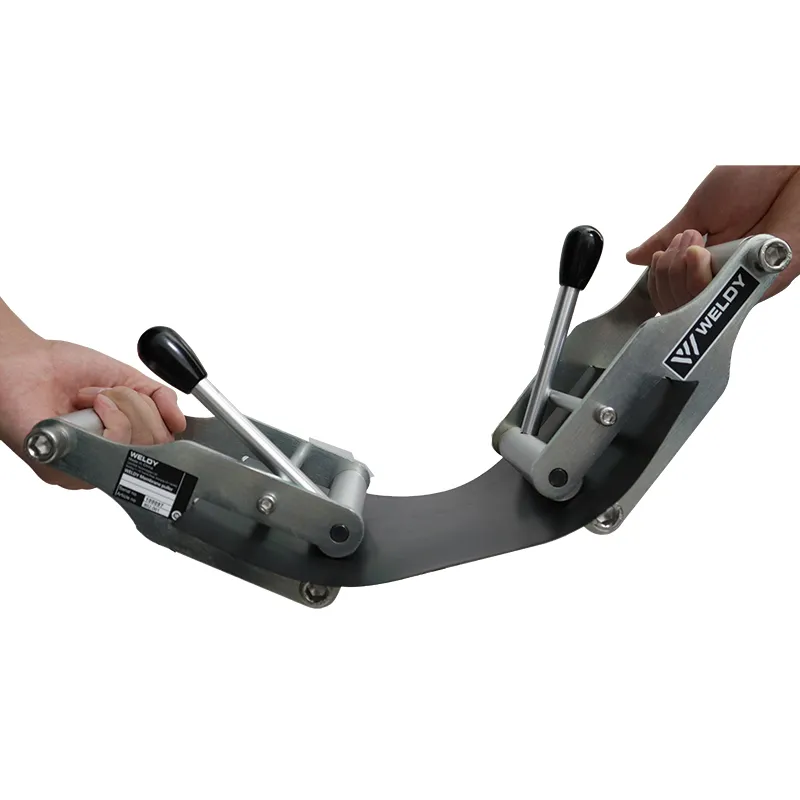
Key Technical Advantages: Why the Membrane Puller Excels
The strategic integration of a **Membrane puller** into geomembrane installation projects yields significant advantages across multiple facets, from operational efficiency to safety and long-term cost savings. These advantages are particularly evident in challenging environments and large-scale applications.
- Unparalleled Efficiency and Speed: Automating the pulling and tensioning of heavy geomembrane rolls drastically reduces the time required for deployment. A **Membrane puller** can unroll and position thousands of square meters of liner in a fraction of the time it would take with manual methods, directly impacting project timelines and labor costs. Its variable speed control allows for optimal pacing depending on site conditions and material type.
- Enhanced Precision and Accuracy: Manual handling of large geomembrane sheets often leads to wrinkles, misalignments, and uneven tension, which can compromise the integrity of the final weld. The **Membrane puller** ensures consistent tensioning and precise positioning, minimizing wrinkles and allowing for cleaner, stronger welds. This precision is critical for applications demanding high integrity, such as hazardous waste containment.
- Superior Safety for Workforce: Handling heavy and cumbersome geomembrane rolls manually poses significant risks of injury from strains, falls, or being struck by moving materials. The **Membrane puller** removes personnel from direct contact with the heavy rolls during deployment, allowing operators to control the process remotely. Integrated safety features like emergency stops, overload protection, and anti-tipping mechanisms further enhance site safety, reducing incident rates and improving working conditions.
- Versatility Across Diverse Terrains: Equipped with robust track systems, the **Membrane puller** is designed to navigate challenging and uneven terrains common in construction sites, including slopes, rocky ground, and muddy conditions. This adaptability ensures its effective deployment in a wide array of projects, from flat industrial sites to mountainous reservoir constructions.
- Durability and Longevity: Constructed from high-strength steel alloys and manufactured with precision engineering (CNC machining, robotic welding), the **Membrane puller** is built to last. Components are designed for minimal wear and tear, and comprehensive anti-corrosion treatments ensure resilience against harsh environmental elements, providing a long operational lifespan and high return on investment.
- Optimized Material Usage and Waste Reduction: By ensuring accurate tensioning and reducing wrinkles, the **Membrane puller** minimizes material overlaps and potential damage during deployment, leading to more efficient material usage and less waste. This not only contributes to cost savings but also aligns with sustainable construction practices.
- Energy Efficiency: Modern **Membrane puller** models often incorporate advanced hydraulic systems and efficient engines that optimize power consumption. This translates to lower fuel consumption (for diesel models) or reduced electricity usage (for electric models), contributing to lower operating costs and a reduced carbon footprint compared to less efficient, older machinery or extensive manual labor.
Expertise Insight: The efficiency gains from using a **Membrane puller** are not just about speed; they translate directly into cost savings through reduced labor hours, minimized material wastage, and fewer reworks due to improper liner placement. Furthermore, the enhanced safety profile significantly lowers the risk of on-site accidents, protecting both personnel and project timelines.
Application Scenarios: Where the Membrane Puller Makes an Impact
The versatility and robust performance of the **Membrane puller** make it an indispensable tool across numerous industries requiring the precise deployment of geomembranes. Its ability to handle large, heavy rolls efficiently in various environments showcases its broad applicability.
- Waste Management & Landfill Construction: This is perhaps the most prominent application. **Membrane puller** systems are crucial for deploying primary and secondary geomembrane liners in municipal solid waste (MSW) landfills and hazardous waste containment facilities. The precision ensures that the liners form an impermeable barrier, preventing leachate contamination of groundwater, a critical environmental safeguard.
- Mining & Heap Leach Pads: In the mining industry, large geomembrane liners are used to construct heap leach pads for mineral extraction and tailings dams for waste containment. The **Membrane puller** facilitates the rapid and accurate installation of these massive liners, which must withstand heavy loads and corrosive chemicals, ensuring operational efficiency and environmental compliance.
- Water Management & Reservoirs: For water retention and irrigation projects, geomembranes line reservoirs, canals, and decorative ponds to prevent water loss through seepage. The **Membrane puller** enables the swift and wrinkle-free installation of these liners, which is vital for maintaining water quality and ensuring the long-term integrity of the containment structure in municipal, agricultural, and industrial water supply systems.
- Aquaculture: Fish and shrimp farms utilize geomembrane liners for pond construction to maintain water quality, prevent seepage, and control disease. The **Membrane puller** ensures efficient and secure liner installation, crucial for creating optimal and hygienic aquatic environments.
- Civil Engineering & Tunnel Linings: In complex civil engineering projects, such as tunnel construction and underground structures, geomembranes act as waterproof barriers. The **Membrane puller** can be adapted for deploying liners in challenging, confined spaces, ensuring effective waterproofing and structural integrity.
- Power Generation: Coal ash ponds and cooling ponds in power plants often require geomembrane liners for containment. The **Membrane puller** assists in the large-scale deployment of these liners, ensuring environmental protection against potential contaminants.
In all these scenarios, the **Membrane puller** reduces the intensive labor associated with manual deployment, mitigates safety risks, and ensures a higher quality, more durable liner installation, contributing significantly to the overall success and longevity of the project.
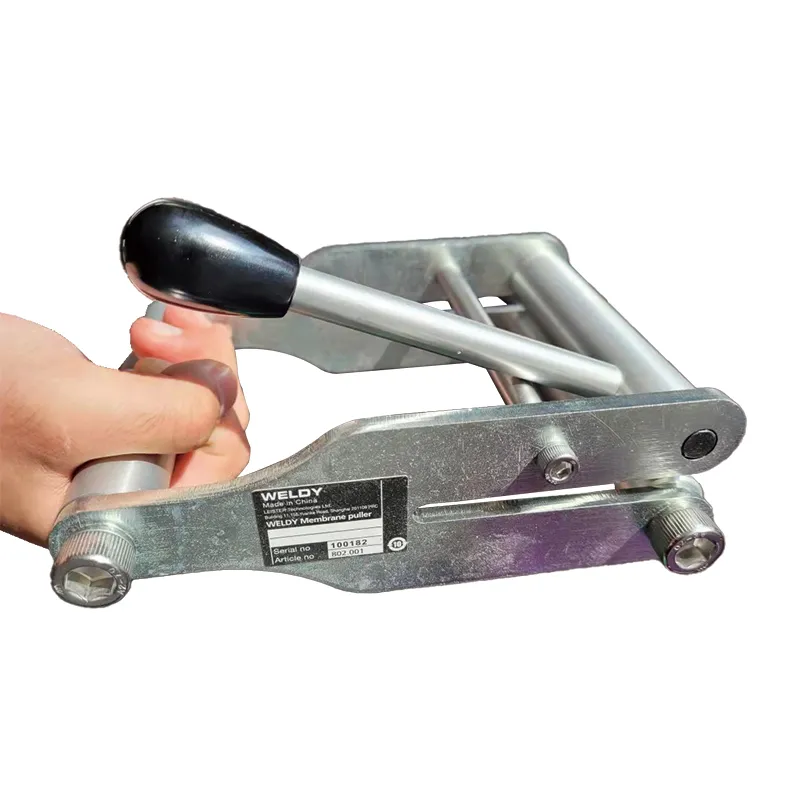
Manufacturer Comparison and MM TechWeld's Competitive Edge
When selecting a **Membrane puller**, discerning buyers consider several factors, including technical specifications, build quality, after-sales support, and customization options. While various manufacturers exist globally, MM TechWeld distinguishes itself through a commitment to innovation, quality, and comprehensive customer service.
| Feature/Aspect | MM TechWeld Membrane Puller | Typical Competitor A | Typical Competitor B |
|---|---|---|---|
| Build Quality & Materials | High-strength steel alloys, precision CNC machining, robotic welding. ISO 9001 certified. Extended lifespan. | Standard industrial steel, conventional welding. | Good quality, but may lack specific certifications. |
| Automation & Control | Advanced wireless remote control (100m+ range), intuitive user interface, variable speed. | Wired control, limited automation. | Remote control available, but range or features may be limited. |
| Safety Features | Multi-layered safety systems: Emergency Stop, Overload Protection, Anti-tipping, Operator Presence Sensor. | Basic safety interlocks. | Standard safety features. |
| Terrain Adaptability | Robust, high-traction track system for extreme slopes and challenging terrains. | Standard track or wheel system, limited slope capability. | Decent mobility, but might struggle with very soft/steep grounds. |
| After-Sales Support | Comprehensive global support, spare parts availability, dedicated technical training, 24/7 hotline. | Regional support, limited spare parts network. | Standard warranty, less extensive training. |
| Customization Options | Extensive customization for pull force, roll width, power source (diesel/electric), and specialized attachments. | Limited standard configurations. | Some flexibility, but complex modifications may be costly. |
| Energy Efficiency | Optimized hydraulic systems, fuel-efficient engines (for diesel models), or high-efficiency electric motors. | Average fuel/power consumption. | Variable, depends on engine/motor choice. |
MM TechWeld's dedication to engineering excellence and customer satisfaction positions its **Membrane puller** as a leading choice for projects demanding the highest standards of performance, safety, and reliability. Our adherence to stringent manufacturing standards and our robust after-sales support system ensure that our clients receive not just a machine, but a complete solution that enhances their operational capabilities and project success.
Customized Solutions: Tailoring the Membrane Puller to Your Needs
Recognizing that no two projects are identical, MM TechWeld offers extensive customization options for its **Membrane puller** to meet specific operational requirements and site challenges. This bespoke approach ensures that clients receive a machine perfectly aligned with their project's unique demands, maximizing efficiency and return on investment.
- Varying Pulling Force Capacities: Depending on the size and weight of geomembrane rolls and the steepness of the terrain, we can configure the **Membrane puller** with different pulling force capabilities to ensure optimal performance.
- Adjustable Roll Widths: While standard models accommodate common roll widths, custom modifications can be made to handle exceptionally wide or narrow geomembrane rolls, providing greater flexibility.
- Power Source Adaptability: Clients can choose between powerful diesel hydraulic systems for remote, off-grid sites or electric motor options for operations with readily available power supply and a preference for lower emissions. Hybrid solutions are also possible for ultimate versatility.
- Specialized Track Systems: For extremely challenging terrains, such as marshy areas or exceptionally steep slopes, we can integrate specialized track systems that offer enhanced traction and stability.
- Remote Control Enhancements: Options for extended range remote controls, multi-channel frequency hopping for interference resistance, or integration with larger site management systems.
- Environmental Hardening: For projects in extreme climates (e.g., deserts, arctic regions), additional hardening options such as enhanced dust filtration, extreme temperature lubricants, or specialized sealing can be incorporated.
- Integrated Data Logging: Custom software can be integrated to log operational data, such as pulling force, speed, and distance covered, providing valuable insights for project management and quality control.
Our engineering team works closely with clients from conceptualization to deployment, ensuring that every customized **Membrane puller** not only meets but exceeds expectations, delivering unparalleled performance for even the most demanding applications. This commitment to tailored solutions reflects our dedication to client success.
Trustworthiness Statement: MM TechWeld stands by the quality and performance of its **Membrane puller** products. We offer a comprehensive 2-year warranty on all structural components and 1-year on hydraulic and electrical systems. Our average delivery cycle for standard models is 4-6 weeks, with customized solutions ranging from 8-12 weeks depending on complexity. Our dedicated customer support team is available 24/7, providing technical assistance, spare parts supply, and on-site training to ensure uninterrupted operation and maximum uptime for your projects.
Application Cases & Success Stories (Experience)
The practical application of the **Membrane puller** has consistently demonstrated its transformative impact on large-scale geosynthetic projects. Here are illustrative examples of how this technology enhances real-world operations:
Case Study 1: Large-Scale Landfill Expansion in the Midwest
Challenge: A major waste management company faced the daunting task of expanding an existing landfill, requiring the deployment of over 500,000 square meters of HDPE geomembrane. The site featured varying slopes (up to 3:1) and a tight construction schedule to meet regulatory deadlines.
Solution: Two **Membrane puller** units from MM TechWeld were deployed. Their robust track systems easily navigated the slopes, and the precise tensioning capabilities ensured wrinkle-free installation. The wireless remote control allowed operators to manage deployment from safe vantage points, significantly improving safety.
Result: The project's geomembrane deployment phase was completed 30% faster than estimated, reducing labor costs by 25%. The consistent tensioning led to higher quality welds, passing all integrity tests with flying colors, and minimizing the need for costly reworks. The client reported significantly improved safety metrics compared to previous projects involving manual geomembrane handling.
Case Study 2: Remote Mining Heap Leach Pad in South America
Challenge: A mining corporation needed to construct a new heap leach pad in a remote, high-altitude location with rough, uneven terrain. The geomembrane rolls were exceptionally heavy due to their thickness and large dimensions, and logistical challenges demanded highly efficient on-site operations.
Solution: A customized **Membrane puller** with enhanced pulling force capacity and a specialized heavy-duty track system was supplied. Its diesel hydraulic power unit ensured autonomy in the remote location, and its ability to handle oversized rolls minimized the number of machine passes required.
Result: Despite the challenging environment, the **Membrane puller** facilitated the deployment of the heavy geomembranes with remarkable speed and precision. The robust construction of the machine withstood the demanding conditions, ensuring continuous operation. The project was able to maintain its ambitious timeline, directly contributing to the early commencement of leaching operations.
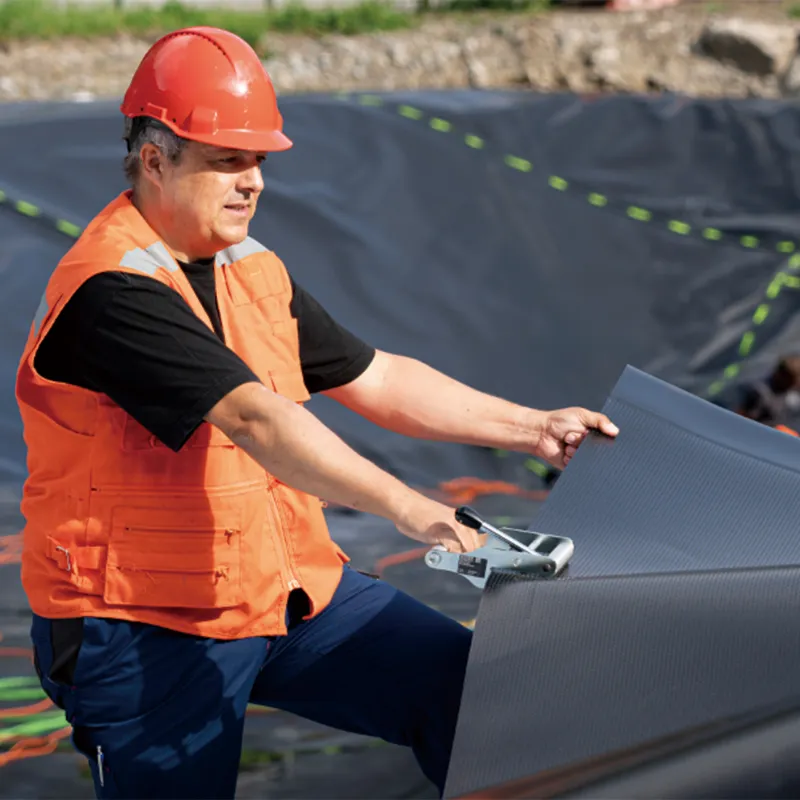
Professional FAQ: Addressing Your Membrane Puller Queries
To further enhance understanding and address common inquiries about the **Membrane puller**, here's a module of frequently asked questions with detailed answers.
Frequently Asked Questions about Membrane Puller
What is the primary benefit of using a Membrane puller over traditional methods?
The primary benefit is a dramatic increase in efficiency, safety, and installation quality. Traditional methods often rely heavily on manual labor, which is slow, physically demanding, and poses significant safety risks due to handling heavy, unwieldy geomembrane rolls. A **Membrane puller** automates the process, allowing for faster deployment, precise tensioning to eliminate wrinkles, and keeps personnel away from potential hazards, leading to a superior and safer installation.
What types of geomembranes can a Membrane puller handle?
An advanced **Membrane puller** is designed to handle a wide range of geomembrane types, including but not limited to High-Density Polyethylene (HDPE), Low-Density Polyethylene (LDPE), Linear Low-Density Polyethylene (LLDPE), Polyvinyl Chloride (PVC), and Ethylene Propylene Diene Monomer (EPDM). Its robust pulling mechanism and adjustable settings allow it to accommodate various thicknesses and roll weights of these materials.
How does the Membrane puller ensure consistent tensioning and prevent wrinkles?
The **Membrane puller** ensures consistent tensioning through its precisely controlled hydraulic or electric drive system, which maintains a uniform pulling speed and force. Integrated sensors monitor the tension, allowing the operator to make real-time adjustments via the remote control. This controlled unrolling and tensioning process minimizes differential movement within the sheet, significantly reducing the formation of wrinkles, which are critical to avoid for strong, reliable seams.
What are the typical power source options for a Membrane puller?
Typically, **Membrane pullers** are powered by either a robust diesel engine that drives a hydraulic system or an electric motor. Diesel options are preferred for remote construction sites where grid power is unavailable. Electric models are suitable for sites with readily accessible power and offer advantages in terms of lower noise and zero emissions during operation. Some manufacturers also offer hybrid configurations for maximum flexibility.
Is the Membrane puller difficult to operate, and what training is provided?
While the **Membrane puller** is a sophisticated piece of equipment, modern units are designed for intuitive operation, often featuring wireless remote controls that simplify maneuvering. MM TechWeld provides comprehensive training programs for operators, covering machine setup, safe operation procedures, basic maintenance, and troubleshooting. The goal is to ensure operators are proficient and confident in maximizing the machine's capabilities.
What maintenance does a Membrane puller require to ensure a long lifespan?
To ensure a long operational lifespan (15-20 years for well-maintained units), a **Membrane puller** requires regular preventative maintenance. This includes routine checks of hydraulic fluid levels and filters, lubrication of moving parts, inspection of tracks and rollers for wear, verification of electrical connections, and cleaning of external surfaces. Following the manufacturer's recommended maintenance schedule and using genuine spare parts are crucial for optimal performance and durability.
Can the Membrane puller operate on steep slopes or uneven terrain?
Yes, an advanced **Membrane puller** is specifically engineered with heavy-duty track systems and powerful traction capabilities to operate effectively on challenging terrains, including steep slopes (often up to 30-45 degrees, depending on machine and surface conditions), rocky ground, and muddy conditions. Its low center of gravity and balanced design enhance stability, ensuring safe and efficient deployment even in demanding environments.
Industry Insights and References
- For more details on the global geosynthetics market: Grand View Research. "Geosynthetics Market Size, Share & Trends Analysis Report." Available at: https://www.grandviewresearch.com/industry-analysis/geosynthetics-market
- To understand the importance of quality control in manufacturing: International Organization for Standardization (ISO). "ISO 9001 Quality Management." Available at: https://www.iso.org/iso-9001-quality-management.html
- Further information on geomembrane installation best practices can be found in publications by the Geosynthetic Institute (GSI) or relevant ASTM standards, such as ASTM D6693 for HDPE geomembranes.










 Pervious
Pervious
